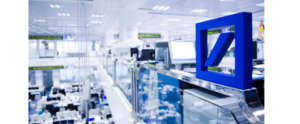Metlife is first US Insurer to adopt carbon neutrality
MetLife, Inc. (NYSE: MET) said today that it will achieve carbon neutrality by the end of 2016, becoming the first U.S.-based insurer to do so.
Significantly, MetLife will achieve its goal through real reductions in energy use and greenhouse gas (GHG) emissions, not simply through the purchase of carbon offsets. In addition, MetLife will require its top suppliers to publicly disclose their GHG emissions and mitigation efforts for the first time.
“MetLife has a long history of promoting a healthy environment for our customers, their families and the communities that we serve, and these new environmental goals are an expansion of our commitment,” said Marty Lippert, MetLife executive vice president and head of Global Technology and Operations.
MetLife’s new commitments are:
- Become carbon neutral in 2016 and going forward. This goal applies to GHG emissions from all of MetLife’s owned and leased properties across the world, as well as its fleet of automobiles in the Auto & Home business line (Scope 1 and 2)*. The goal also applies to the company’s employee business travel (Scope 3)†. MetLife will achieve carbon neutrality through continued implementation of energy efficiency measures across its portfolio, increased use of collaboration tools to reduce employee business travel and investment in carbon offsets for the remainder of its GHG emissions.
- By 2020, reduce all energy consumption by 10 percent from a 2012 baseline. This applies to the company’s global office portfolio, including company-owned and leased facilities. These reductions will be achieved through a combination of capital improvement projects and facility upgrades across offices around the world, such as lighting retrofits, chiller and boiler replacements, efficient HVAC systems, demand metering, occupancy-sensor installations and other projects.
- By 2020, reduce location-based greenhouse gas emissions (metric tons of CO2 equivalent) by 10 percent from a 2012 baseline. This 10 percent reduction applies to MetLife’s global owned and leased offices, the Auto & Home business automobile fleet, and business travel. These reductions will be achieved through various emissions reduction strategies, including energy efficiency capital projects, the integration of sustainability best practices into new MetLife workspaces, and the increased use of collaboration tools to offset employee travel. These reductions will not be achieved through the purchase of green energy or carbon offsets.
- By 2020, require 100 of MetLife’s top suppliers to publicly disclose their GHG emissions and emission-reduction activities. As a financial services company, MetLife’s supply chain represents a significant portion of its environmental impact, so it is important to engage key suppliers and encourage reduction of their own GHG emissions.
“We commend MetLife for their commitment to environmental stewardship,” said Lance Pierce, president, CDP North America, an international not-for-profit organization that collects data for companies and cities to measure, disclose, manage and share vital environmental information. “We look forward to seeing them exercise leadership on climate change issues and to charting their progress in future CDP disclosures.”
“We are proud to announce environmental goals that address our global operations across nearly 50 countries,” said Joe Sprouls, MetLife executive vice president and head of Global Corporate Services. “As a company with a large global real estate portfolio, MetLife works hard to reduce energy consumption and optimize our buildings’ environmental performance.”
MetLife’s new commitments build on previously implemented efforts to reduce its environmental impact. Examples include:
- Green Facilities: Since 2005, MetLife has reduced energy consumption across our U.S.-owned offices by 25 percent as a result of facility upgrades and capital improvement projects. In addition, 100 percent of MetLife’s owned and managed offices in the U.S. are certified under the Energy Star commercial buildings program and more than 50 percent are LEED®-certified. MetLife has a total of 17 LEED-certified buildings globally.
- Green Investments: MetLife now holds equity stakes in 46 LEED-certified properties as part of its strategy to make significant investments in sustainability and green building practices. Since 2003, MetLife has invested $2.9 billion in renewable energy projects and now has ownership stakes in more than 25 wind and solar farms that produce enough clean energy to power 1 million homes.
- Responsible Sourcing: MetLife practices environmentally responsible sourcing by purchasing green products and incorporating sustainability criteria in vendor sourcing and management processes. MetLife is a member of the Carbon Disclosure Project (CDP) Supply Chain Program and uses this program to encourage suppliers to take climate action.
- Employee Engagement: The company actively engages associates through “Our Green Impact,” a program that encourages employees to participate in MetLife’s sustainability programs and to reduce their environmental impact at work, home and in communities around the world.
MetLife is also on target to achieve or exceed prior U.S.-based environmental goals set by the company for its U.S. owned and managed office portfolio.
For more information on MetLife’s commitment to the environment and other corporate responsibility activities, visit www.metlifeglobalimpact.com.
About MetLife
MetLife, Inc. (NYSE: MET), through its subsidiaries and affiliates (“MetLife”), is one of the largest life insurance companies in the world. Founded in 1868, MetLife is a global provider of life insurance, annuities, employee benefits and asset management. Serving approximately 100 million customers, MetLife has operations in nearly 50 countries and holds leading market positions in the United States, Japan, Latin America, Asia, Europe and the Middle East. For more information, visit www.metlife.com.
Forward-Looking Statements
This news release may contain or incorporate by reference information that includes or is based upon forward-looking statements within the meaning of the Private Securities Litigation Reform Act of 1995. Forward-looking statements give expectations or forecasts of future events. These statements can be identified by the fact that they do not relate strictly to historical or current facts. They use words such as “anticipate,” “estimate,” “expect,” “project,” “intend,” “plan,” “believe” and other words and terms of similar meaning, or are tied to future periods, in connection with a discussion of future operating or financial performance. In particular, these include statements relating to future actions, prospective services or products, future performance or results of current and anticipated services or products, sales efforts, expenses, the outcome of contingencies such as legal proceedings, trends in operations and financial results.
Any or all forward-looking statements may turn out to be wrong. They can be affected by inaccurate assumptions or by known or unknown risks and uncertainties. Many such factors will be important in determining the actual future results of MetLife, Inc., its subsidiaries and affiliates. These statements are based on current expectations and the current economic environment. They involve a number of risks and uncertainties that are difficult to predict. These statements are not guarantees of future performance. Actual results could differ materially from those expressed or implied in the forward-looking statements. Risks, uncertainties, and other factors that might cause such differences include the risks, uncertainties and other factors identified in MetLife, Inc.’s most recent Annual Report on Form 10-K (the “Annual Report”) filed with the U.S. Securities and Exchange Commission (the “SEC”), Quarterly Reports on Form 10-Q filed by MetLife, Inc. with the SEC after the date of the Annual Report under the captions “Note Regarding Forward-Looking Statements” and “Risk Factors,” and other filings MetLife, Inc. makes with the SEC. MetLife, Inc. does not undertake any obligation to publicly correct or update any forward-looking statement if MetLife, Inc. later becomes aware that such statement is not likely to be achieved. Please consult any further disclosures MetLife, Inc. makes on related subjects in reports to the SEC.
The purpose of this news release is to describe the environmental goals that MetLife intends to achieve and how the company intends to achieve those goals.
MetLife is the first U.S.-based insurer to adopt carbon neutrality based on an analysis of the Carbon Disclosure Project’s (CDP) database of responses from thousands of organizations worldwide. CDP’s database can be found at: www.cdp.net.
*Scope 1 emissions are all direct GHG emissions, such as on-site energy use at owned and leased offices. Scope 2 emissions are indirect GHG emissions from consumption of purchased electricity, heat or steam.
†Scope 3 emissions are other indirect emissions, such as emissions resulting from business travel.













